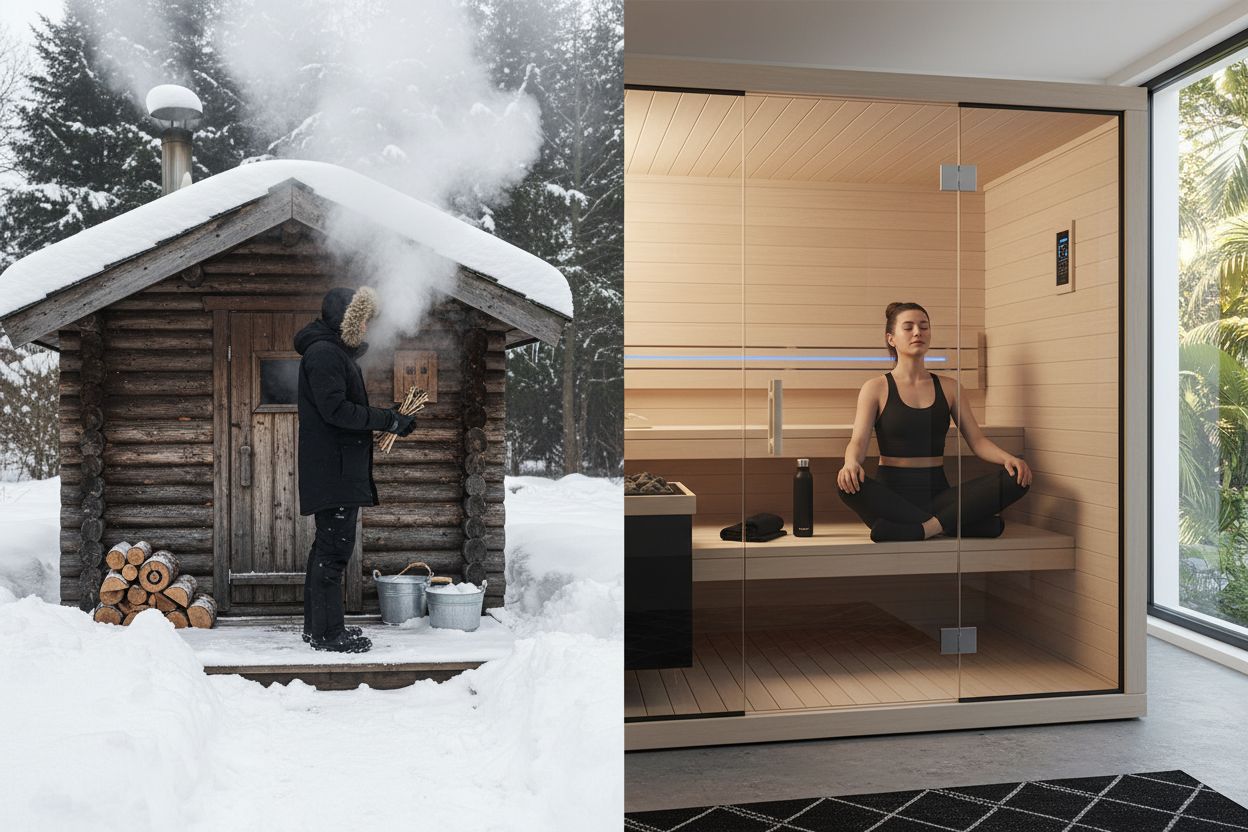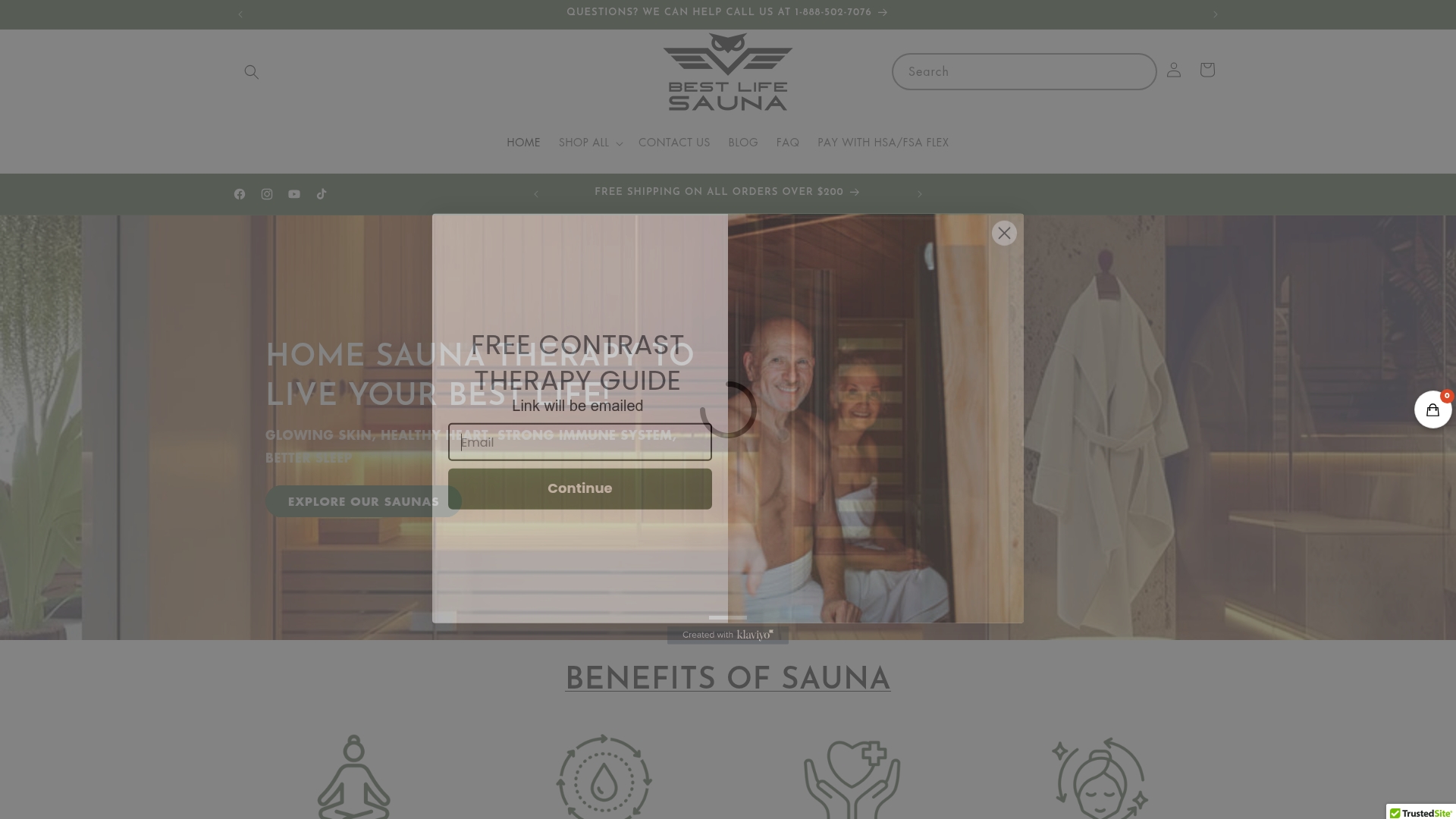
Complete Guide to Seasonal Sauna Practices
Did you know that regular sauna users can experience up to a 40 percent reduction in all-cause mortality according to recent studies? Saunas offer more than just relaxation—they are carefully balanced environments that change with each season, impacting both their care and your wellness. Understanding the specific needs of your sauna throughout the year helps maintain safety and unlock unique health benefits depending on the time of year.
Table of Contents
- Understanding Seasonal Sauna Practices
- Types of Saunas and Seasonal Approaches
- Adapting Sauna Routines Throughout the Year
- Health Benefits in Different Seasons
- Safety Guidelines and Common Pitfalls
Key Takeaways
| Point | Details |
|---|---|
| Seasonal Maintenance | Regular seasonal checks, including internal and external components, ensure optimal sauna performance and safety throughout the year. |
| Types of Saunas | Choose the right sauna type for each season to maximize benefits: wood-fired for winter, infrared for year-round use, and electric for flexibility. |
| Health Benefits | Sauna sessions can enhance immune support in winter, detoxification in spring, stress relief in summer, and metabolism support in autumn. |
| Safety Guidelines | Follow safety protocols such as temperature control, hydration, and session duration to ensure a safe and effective sauna experience. |
Understanding Seasonal Sauna Practices
Saunas are not just indoor wellness spaces - they’re living environments that require thoughtful care throughout the year. Each season presents unique maintenance challenges and opportunities to keep your sauna performing optimally. Seasonal maintenance isn’t just about preserving your investment; it’s about ensuring a safe, reliable, and enjoyable sauna experience.
According to Summerhouse24, seasonal maintenance varies dramatically between spring/summer and autumn/winter. During warmer months, the focus shifts to exterior cleaning, checking UV sealants, and maintaining gutters. Conversely, colder seasons demand more intensive internal checks - focusing on drainage systems, heating components, and weather sealing.
Fire safety takes center stage in seasonal maintenance. Research from XCell Misting recommends a comprehensive annual inspection schedule:
- Spring: Inspect electrical components, ventilation systems, and safety detectors
- Summer: Monitor heater performance and ventilation efficiency
- Autumn: Conduct a deep clean of the heater and update safety signage
- Winter: Reinforce insulation, conduct heater safety checks, and enhance emergency preparedness
By adopting a proactive, season-specific approach to sauna maintenance, you’ll protect your wellness sanctuary, extend its lifespan, and guarantee a consistently safe and enjoyable experience. Your sauna is more than equipment - it’s an investment in your health and relaxation.
Types of Saunas and Seasonal Approaches
Not all saunas are created equal, especially when it comes to seasonal performance. Sauna types vary dramatically in how they generate heat, adapt to environmental conditions, and provide wellness benefits throughout the year. Understanding these differences can help you select the most suitable sauna for your specific seasonal needs.
According to Best Life Sauna, three primary sauna types emerge with distinct seasonal characteristics. Wood-fired saunas excel during winter months, delivering intense, robust heat that feels particularly comforting when temperatures drop outside. They create a primal, traditional sauna experience that connects users with age-old heating techniques.
In contrast, infrared saunas offer remarkable year-round consistency. These modern wellness spaces provide energy-efficient heating that remains stable regardless of external temperature fluctuations. Their key advantages include:
- Uniform heat distribution
- Lower operational costs
- Consistent performance across seasons
- Gentle, penetrating warmth
Electric saunas round out the seasonal options, offering precise temperature control and rapid heating capabilities. These versatile units allow users to create their ideal thermal environment quickly, making them perfect for households wanting flexible, on-demand sauna experiences throughout the year.
Whether it’s a chilly winter evening or a crisp autumn morning, electric saunas adapt effortlessly to your wellness needs.
Here’s a comparison of sauna types and their seasonal strengths:
| Sauna Type | Best Seasonal Use | Key Advantages |
|---|---|---|
| Wood-Fired | Winter | Intense heat Traditional feel |
| Infrared | Year-Round | Even heat Low cost Gentle warmth |
| Electric | All Seasons | Fast heating Precise control |
Adapting Sauna Routines Throughout the Year
Creating a year-round sauna strategy means understanding how your wellness routine can flex with seasonal changes. Your approach to sauna use isn’t just about temperature - it’s about harmonizing your body’s needs with environmental shifts and personal health goals.
According to Best Life Sauna, different sauna technologies support unique seasonal routines. Infrared saunas shine as the most consistent option, offering steady, adaptable sessions throughout the year. Their gentle, penetrating heat makes them ideal for maintaining a regular wellness practice regardless of external weather conditions.
Seasonal sauna routines can be strategically designed to maximize health benefits:
- Winter: Longer, more intense sessions for immune support and warming
- Spring: Shorter, detoxifying sessions to help reset after winter
- Summer: Lighter, cooling-focused sessions with hydration emphasis
- Autumn: Transitional sessions supporting metabolism and circulation
The key is listening to your body and adjusting your sauna practice accordingly. Whether you’re using a wood-fired sauna for deep winter warmth or an electric unit for quick, precise sessions, the goal remains the same: supporting your overall wellness through mindful, season-specific sauna experiences.

Health Benefits in Different Seasons
Sauna use isn’t a one-size-fits-all wellness practice - it’s a dynamic experience that evolves with the changing seasons. Seasonal health benefits emerge as your body interacts differently with heat therapy throughout the year, creating a nuanced approach to physical and mental well-being.
In winter, saunas become more than just a warm retreat - they’re a powerful immune-boosting sanctuary. The intense heat stimulates circulation, helps combat seasonal depression, and provides a much-needed metabolic boost during months of reduced physical activity. Your body’s natural defense mechanisms kick into high gear, generating heat shock proteins that support cellular resilience and overall immune function.
Spring and summer bring unique sauna advantages:
- Spring Detoxification: Supports lymphatic drainage and helps reset body after winter
- Summer Stress Relief: Reduces heat-related stress and promotes cardiovascular efficiency
- Skin Health: Enhances natural sweating mechanisms and helps clear pores
- Recovery Support: Accelerates muscle recovery after outdoor activities and exercise
As autumn approaches, sauna sessions become a critical transition tool. They help regulate body temperature, support metabolic processes, and prepare your immune system for the upcoming winter months. The consistent heat exposure helps maintain circulation, supports mental clarity, and provides a grounding ritual during seasonal changes. Your sauna becomes more than a wellness tool - it’s a holistic health companion that adapts to your body’s evolving needs throughout the year.
![]()
Safety Guidelines and Common Pitfalls
Navigating sauna use safely requires more than good intentions - it demands a strategic, informed approach. Sauna safety isn’t about restricting your experience, but understanding how to maximize benefits while minimizing potential risks across different seasons and personal health conditions.
According to Saunology, comprehensive safety guidelines are crucial for responsible sauna practice. The fundamental recommendations include:
- Temperature Control: Maintain sessions between 65–90 °C
- Session Duration: Limit visits to 5–20 minutes
- Hydration: Drink water before, during, and after sauna use
- Medical Consultation: Always check with healthcare providers, especially if you have pre-existing conditions
Common pitfalls can transform a relaxing experience into a potential health risk. Avoid alcohol before or during sauna sessions, as it impairs your body’s natural cooling mechanisms and increases dehydration risk. Pay close attention to your body’s signals - dizziness, lightheadedness, or excessive sweating are signs you should exit the sauna immediately. The key is listening to your body and respecting its limits, ensuring each sauna session remains a rejuvenating, safe experience that supports your overall wellness journey.
Elevate Your Seasonal Sauna Experience with Best Life Sauna
The Complete Guide to Seasonal Sauna Practices highlights the need for tailored sauna care throughout the year to ensure safety, comfort, and maximum wellness benefits. If you are looking to master the art of seasonal sauna routines with the right sauna type and accessories, we understand the challenge of balancing maintenance, safety, and enjoyable heat therapy all year long. Whether you want the intense warmth of a wood-fired sauna in winter or the consistent healing glow of an infrared sauna any time of year, finding the perfect match with reliable support is key.

Discover our wide selection of premium saunas and wellness solutions designed for every season at Best Life Sauna. Our collection includes infrared, electric, and traditional saunas crafted to deliver precise heat control, durability, and comfort tailored to your needs. Take advantage of free shipping on orders over $200 and our price match guarantee to invest confidently in your health. Start your year-round sauna journey today by exploring the best seasonal sauna options and accessories at Best Life Sauna. Your wellness sanctuary awaits with expert care and quality products made to support your safety and relaxation every season.
Frequently Asked Questions
What are the key maintenance tasks for my sauna throughout the seasons?
Seasonal sauna maintenance involves different tasks: in spring, inspect electrical components and ventilation; in summer, monitor heater performance; in autumn, deep clean the heater; and in winter, reinforce insulation and conduct safety checks.
How do different sauna types perform in various seasons?
Wood-fired saunas excel in winter for their intense heat, infrared saunas offer year-round consistency with gentle warmth, and electric saunas provide precise temperature control for all seasons, allowing flexible wellness experiences.
What seasonal health benefits can I expect from sauna use?
In winter, saunas boost immunity and circulation, while spring focuses on detoxification. Summer enhances skin health and recovery from activities, and autumn prepares the body for winter, regulating temperature and supporting metabolism.
What safety guidelines should I follow when using a sauna?
Maintain a temperature between 65–90 °C, limit sessions to 5–20 minutes, stay hydrated, and consult healthcare providers if you have pre-existing conditions to ensure a safe sauna experience.

